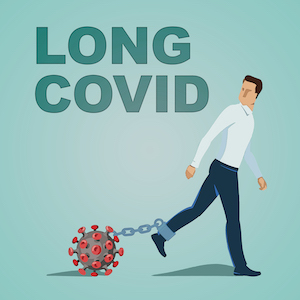Long-term impact of COVID-19 requiring elevated oxygen support and safety of prolonged positive pressure ventilation

HTML: 77
All claims expressed in this article are solely those of the authors and do not necessarily represent those of their affiliated organizations, or those of the publisher, the editors and the reviewers. Any product that may be evaluated in this article or claim that may be made by its manufacturer is not guaranteed or endorsed by the publisher.
Authors
In this study, we analyzed long-term sequelae in patients hospitalized at Montichiari Hospital (Brescia, Italy) during the COVID-19 acute phase, who needed a high-flow oxygen treatment. The follow-up evaluation has been performed after more than one year from discharge through a quality-of-life phone interview, standard laboratory tests, chest computed tomography, and global spirometry with an evaluation of the diffusing capacity of the lungs for carbon monoxide (DLCO). In our analysis, we found that patients who needed high FiO2 support during the acute phase, independently from the device used to administer it, showed a long-term heavy burden of pulmonary consequences: more than half of patients presented radiological alterations and persistent dyspnea or DLCO alterations; about 17% of them had alterations compatible with pulmonary fibrosis. Further analysis included a comparison of long-term consequences in patients treated with different devices. An interesting result was that prolonged positive pressure ventilation treatment didn’t seem to cause persistent pulmonary damage and thus could be considered a safe approach. In conclusion, this study confirms the heavy quality-of-life impact of moderate to severe COVID-19 and highlights the importance of recognizing patients who will benefit from rehabilitative programs and customized follow-up depending on the acute phase disease severity.
How to Cite

This work is licensed under a Creative Commons Attribution-NonCommercial 4.0 International License.
PAGEPress has chosen to apply the Creative Commons Attribution NonCommercial 4.0 International License (CC BY-NC 4.0) to all manuscripts to be published.

 https://doi.org/10.4081/itjm.2023.1641
https://doi.org/10.4081/itjm.2023.1641



